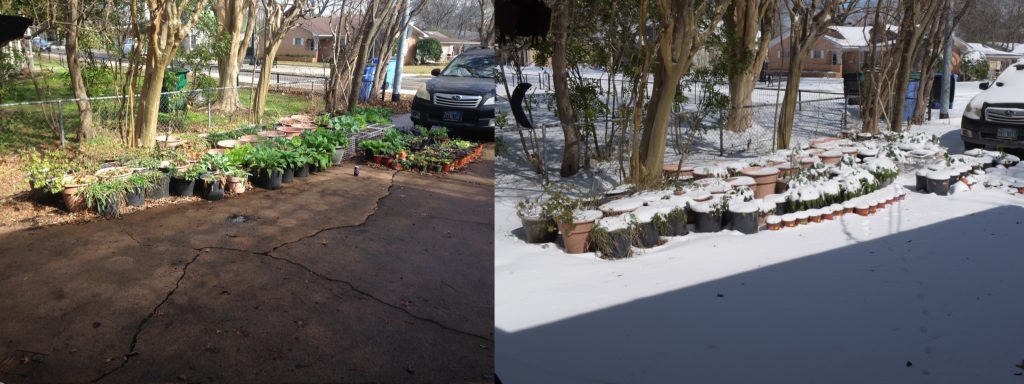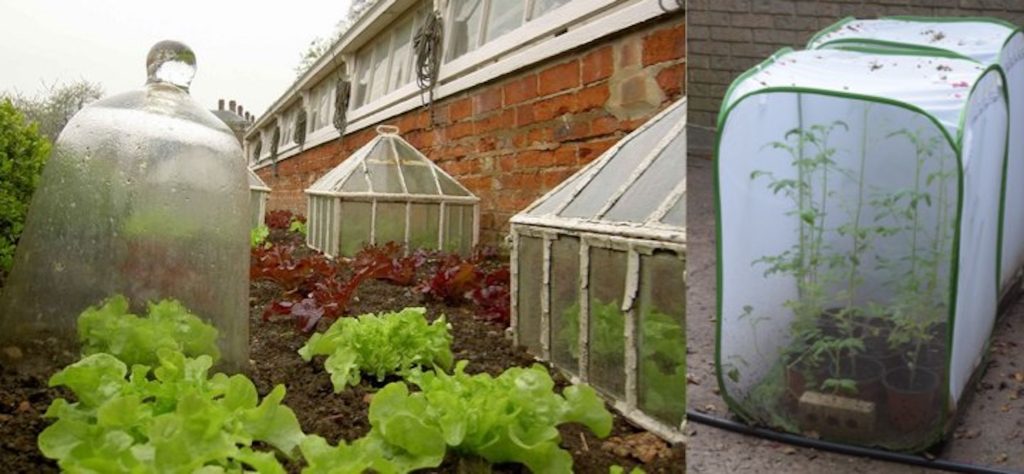Scientists expect that climate change will have a number of effects on our lives. As gardeners, one of the most important of these is a change in the arrival time of spring temperatures. Averaged globally, spring temperatures will start arriving very slightly sooner each year. However, at any individual location, the arrival of spring temperatures — compared to their expected arrival date — will be highly variable. Since spring is more likely to arrive early than late, make a plan to take advantage of this situation.

USDA Plant Hardiness Zones correspond roughly to the last frost dates in those areas. Mountainous regions will have later than expected frosts compared to flatlands. Check the internet to find your local average last date.
Most gardeners are well aware of their region’s average last frost date. Gardeners generally begin planting vegetables and annual flowers once this date has passed and the weather forecast indicates a continuance of above freezing temperatures. In northern gardens, the overall growing season is fairly short. For long-season crops, such as pumpkins, getting them started at the right time will ensure that they develop and reach maturity under favorable temperature conditions. In the south, vegetables needs to be planted promptly so that exceedingly hot temperatures don’t arrive until after the plants have flowered and set fruit. Most vegetables will not set fruit at temperatures over 95 °F (35 °C). As an example, the unprecedented heat in Texas in the spring of 2022 was disastrous to watermelon farmers. (It also did in my watermelons and limited my tomato crop.)

Sometimes it seems like spring has arrived early, but don’t interpret early warm temperatures as an indication that no future freezes are coming. Watch your local long-term weather forecast as your last frost date approaches.
As spring approaches, you should plan to plant when you normally do in relation to your average last frost date. As this time approaches, however, keep an eye on the long-range weather forecast. If your last frost date is still approaching, but the forecast does not include a freeze, consider planting at least some of your spring garden plants. Keep in mind, though, that nearly every year there are at least a few days of comparative warm weather near the end of winter. Every year, this entices gardeners everywhere to set out tomato transplants early only to have them freeze later. Recall that half of all final freezes occur after the average last frost date. So resist the urge to plant over three weeks early. That’s just asking for trouble. Planting early can reap big benefits, but it is also taking a risk. If your last frost date is three weeks away, and the forecast overnight lows are all above 36 °F (2 °C) or so, think about planting the vegetables that will thrive (or at least tolerate) those temperatures. For example, most peas will be fine when planted immediately after the soil thaws. Most beans, however, will do poorly if the soil temperature is lower than 50 °F (10 °C). Lima beans require even warmer soil temperatures and daytime air temperatures should be around 65 °C (18 °C).

Covering plants with cloches, row covers, or by growing them in mesh enclosures allows you to get a jump on the season. They will also keep out pests, but must be removed before temperatures get too high. (Cloche photo courtesy Wikipedia)
If you do plan to plant early, invest in some hoops and agricultural netting. This will allow you cover the rows if a light freeze is forecast. For individual large plants, a cloche can serve as a mini-greenhouse when cold weather threatens. If the plant is only a few inches tall, you can cut the bottom out of a gallon milk jug and use that as protection. Large plants, of course, can be planted indoors in small containers and moved outside when the weather is suitable. Even before climate change became an issue, gardeners had been doing this to raise transplants for spring planting.

You can plant garden plants indoors before it is warm enough for them to be outside. Take them outside on warm afternoons and bring them in at night. Or, keep them by a window that gets sun or under grow lamps.
Among the longer-term effects of climate change will be a shifting of agricultural zones towards the poles. North American gardeners on the southern edge of where growing a typical vegetable garden is possible will find it increasingly difficult, and eventually impossible, to grow anything other than a few locally-adapted plants. Gardeners on the current northern edge of vegetable gardening feasibility will start experiencing longer growing seasons and higher peak temperatures. The line on the map separating places that normally experience at least one hard freeze every year from places that do not usually experience freezing temperatures will creep northward. This line is currently in the very southern tips of Florida and Texas. Gardeners south of this line may experience more insect pests in the early spring as they won’t freeze in the winter. (And of course, some insects are adapted to survive freezing temperatures in the winter.) However, these conditions will not arrive overnight.
Conclusion
So, to make a long story short, expect the change in climate to proceed fairly slowly. (Or at least, it will seem slow from our perspective. On a geologic scale, it’s happening blindingly quickly.) But expect the variability in your local weather to become progressively more pronounced. As a gardener, expect that spring temperatures are more likely to arrive sooner than usual than later than usual. But realize that advance will be sporadic. Most years, your weather will likely stick close to the long-term averages. However, sometimes spring temperatures will arrive substantially earlier than expected. So plan for your usual gardening season, but be prepared to get a jump on your spring planting each year. If the indicators of an early spring are present, the risk of early planting should pay off more often than not.

[…] normal temperatures during the gardening season, but prepare for warmer temperatures. In an upcoming post, I will explain how to do […]